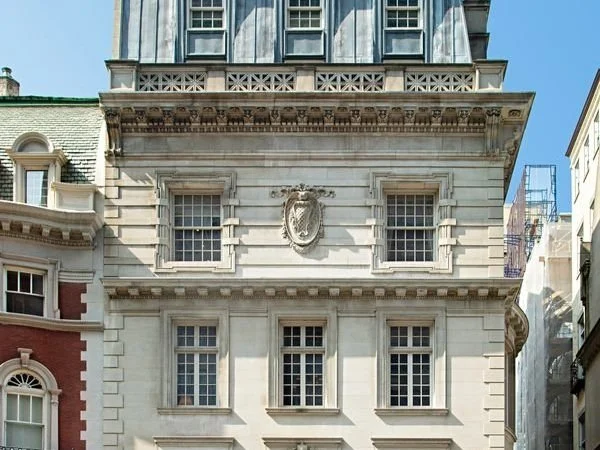This Fifth Avenue Home is One of the Last Gilded Age Mansions in Manhattan
Address: 854 5th Ave, New York, NY 10065, United States
This property is listed for $50,000,000 USD by Tristan Harper of Douglas Elliman.
In 1867, Wallace C. Andrews was one of the first of Manhattan’s upper class society to venture what was then considered “north” in the city (Central Park was only just being developed) to erect a large residence on Fifth Avenue between 66th and 67th Street. It was a bold move at the time, but by the turn of the century the Central Park area was being bought up and built out by many of the city’s wealthy residents.
In 1899, Andrews and his wife perished in a fire on the property and in 1903, the property was purchased by R. Livingston Beeckman for $325,000. Beeckman, a New York stockbroker who would go on to become the governor of Rhode Island in 1915, would purchase the neighbouring property at the corner of Fifth Avenue and 57th a month later. The Times reported on Beeckman’s plans to build a new 6 storey home, designed by the architects behind Grand Central Station, Warren & Wetmore.
Work by Warren & Wetmore
Beeckman, named by Vanity Fear to be “one of the most popular men” in both New York and Newport (In 1893, he sold his Newport Estate, Lands End to Edith Wharton for $80,000 - or $800,000 today). He was seen as an icon in the “American world of fashion and sport”, being the youngest man in history to win the All-Comers Tennis Champion at age 20 in 1886. In 1906 he won the National Championship playing polo - the same year that he finished his Upper East Side home, facing Central Park.
The Beeckman House features original Gilded Age details created by master artisans at the turn of the 20th century. Of note are the hand-carved, white marble balustrades modelled after the staircase in Versailles, considered the inspiration for the home, and 17 ornate fireplaces throughout the residence.
In 1925, it became the residence of Emily Thorn Vanderbilt Sloane White, granddaughter of railroad tycoon Cornelius Vanderbilt. She would leave her mark on the mansion, by adding cherub details to the moldings and angelic ceiling frescos.
Over time, this area of Manhattan would change again. In the 1930’s, many of the newly-built Gilded Age homes were bought up by developers and replaced with apartment buildings. Today, the Beeckman House is sandwiched between two such buildings, and only a handful of these extraordinary homes remain.
The home was listed as a New York City landmark in 1966, noted for its “elegant grandeur...and… palatial scale...which reflects the influence of the Eighteenth Century classic period of Louis XV...In its noble scale this house, if multiplied, could form a palace.”
The Gilded Age mansion is spread across 20,000 square feet, with 10 main rooms boasting views of Central Park - and bullet-proof windows.
The 9-level property is currently used as Serbia’s Permanent Mission to the United Nations. The property belongs to the five successor states of the former Yugoslavia, and in 1963 it was the hideout of Josip Broz Tito,the late head of Yugoslavia’s socialist federal republic, following his assasination attempt at the Waldorf Astoria hotel.
The New York Post reports the property also has a Cold-War era “secret top-floor, metal-padded room known as a Faraday Cage that allowed officials of the Soviet ally to converse or make calls without the risk of being wiretapped.”
The property is being offered for the first time in over 70 years, and just 2 years after a fire devastated the third floor of the historic home. After the fire, the home was restored, per approval from the Landmarks Preservation Commission, and re-listed at the same $50,000,000 USD price tag.
All photos belong to the listing agency.
















































